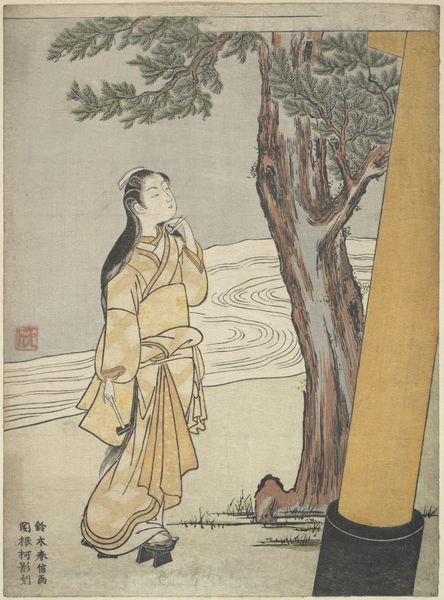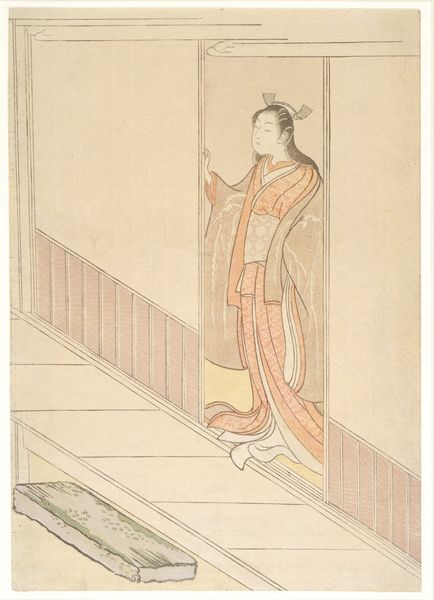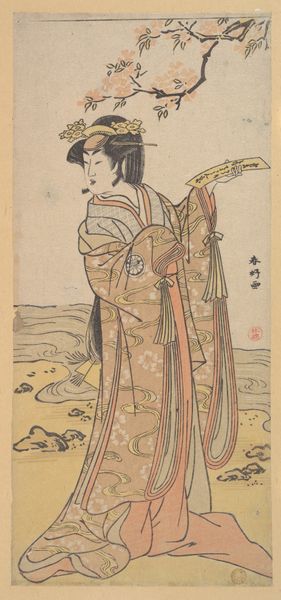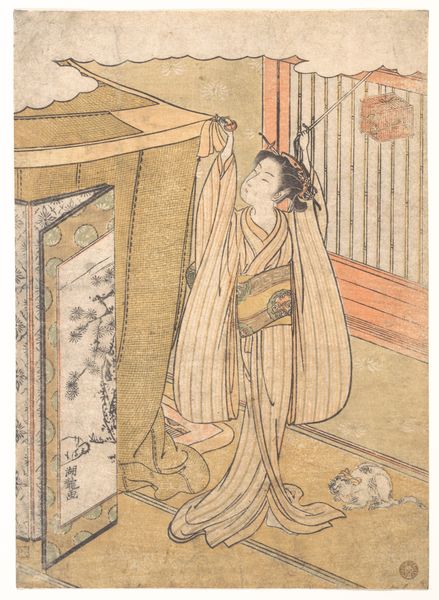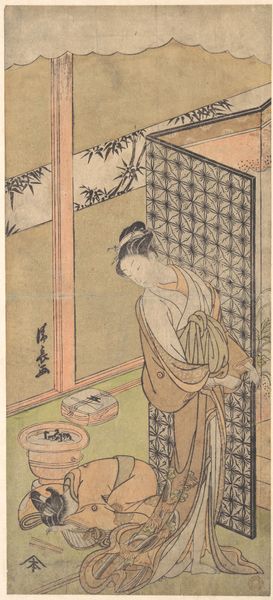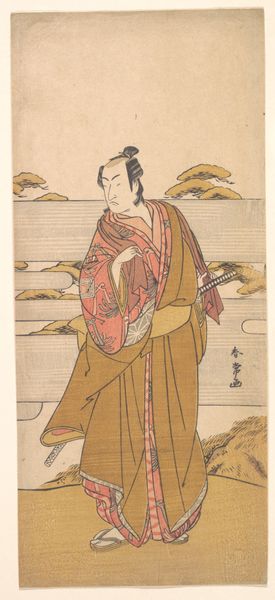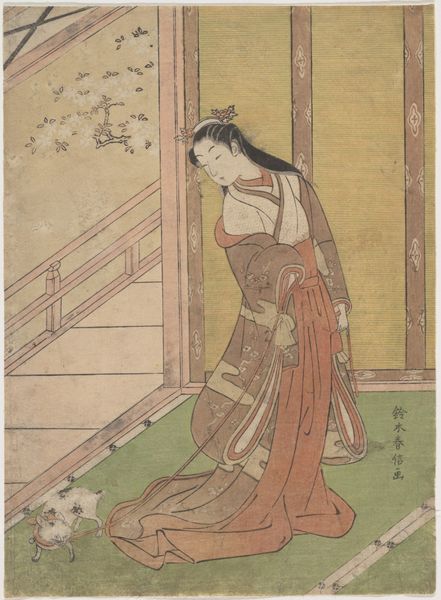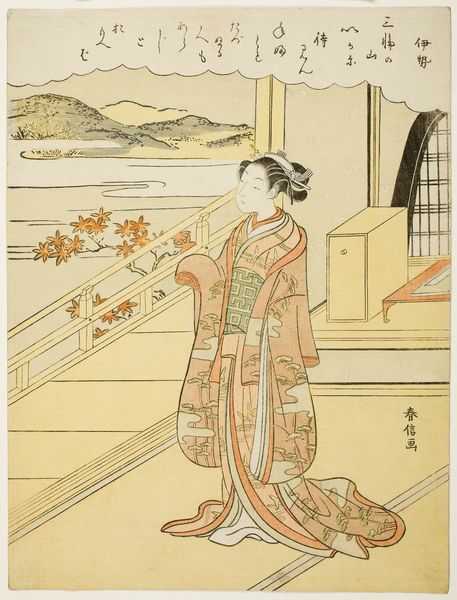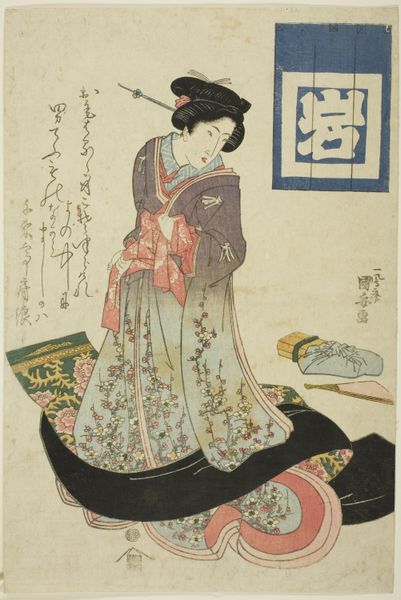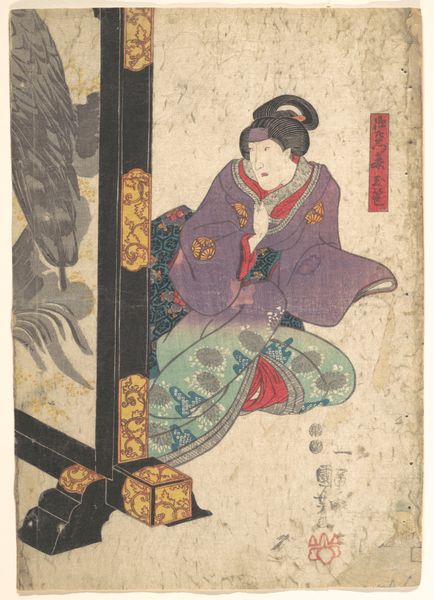
print, woodblock-print
#
portrait
# print
#
asian-art
#
ukiyo-e
#
figuration
#
woodblock-print
Dimensions: H. 11 in. (27.9 cm); W. 8 1/4 in. (21 cm)
Copyright: Public Domain
Curator: Look at this woodblock print, dating to between 1725 and 1770. The artist is Suzuki Harunobu, and it’s titled “Lady Komachi." Editor: There’s an immediate serenity to this piece, isn't there? The soft colors, the woman's downcast gaze... It projects a contemplative mood. Curator: Yes, the piece speaks to that mood. We can situate Harunobu within the context of the Edo period, where there was great consumer demand among the merchant class for these sorts of prints known as ukiyo-e. They captured, quite deliberately, images of a floating world, a world of beauty and transient pleasure. Editor: That concept of a "floating world" really comes through. I'm drawn to the symbolism of the pine boughs overhead – pine is often associated with longevity and perseverance in Japanese art, almost a wish for lasting beauty amidst that transience. Curator: Exactly. There is such artifice in what appears to be a spontaneous moment, or the way that art is consumed. This was affordable art, but these beautiful women, celebrated courtesans, actresses, those selling dreams were always elevated. Ukiyo-e both democratized and re-inscribed class hierarchies. Editor: Absolutely. It reminds me of the layering of meaning found even in seemingly simple details. Consider the kimono, for instance— the patterns aren't just decorative, but tell a story, indicating status, season, even personal aspirations. Curator: That layering is also about creating different spheres of appreciation and connoisseurship. Here at The Met, of course, it's placed in a very particular frame, both literally and figuratively. We emphasize Harunobu’s role in developing the full-color woodblock print, pushing the boundaries of what this popular art form could achieve. Editor: Ultimately, this Lady Komachi stands as a lovely moment. The artist captures not just an individual, but evokes larger social desires, cultural meanings. Curator: Indeed. A testament to the complex ways we, even now, engage with popular imagery and its inherent cultural framing.
Comments
No comments
Be the first to comment and join the conversation on the ultimate creative platform.
